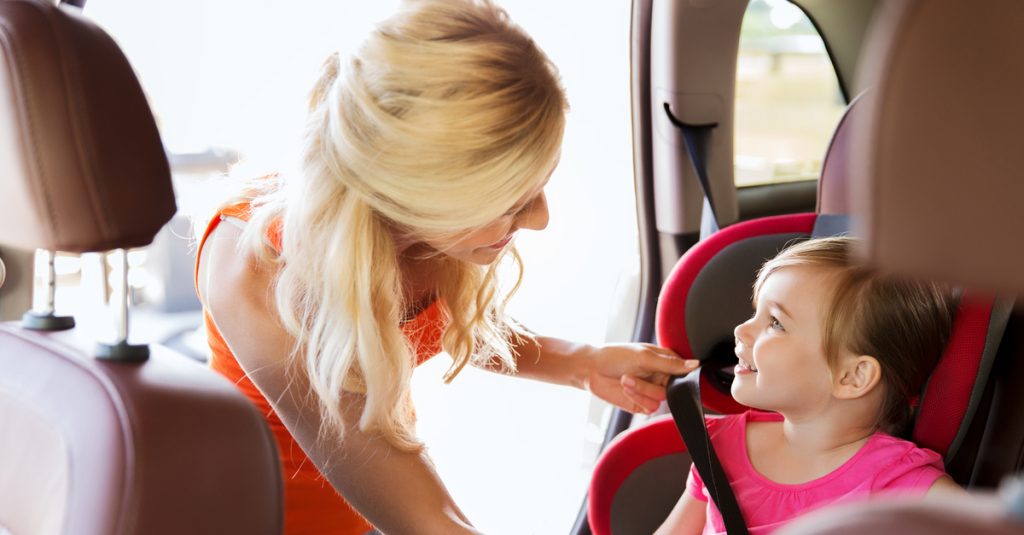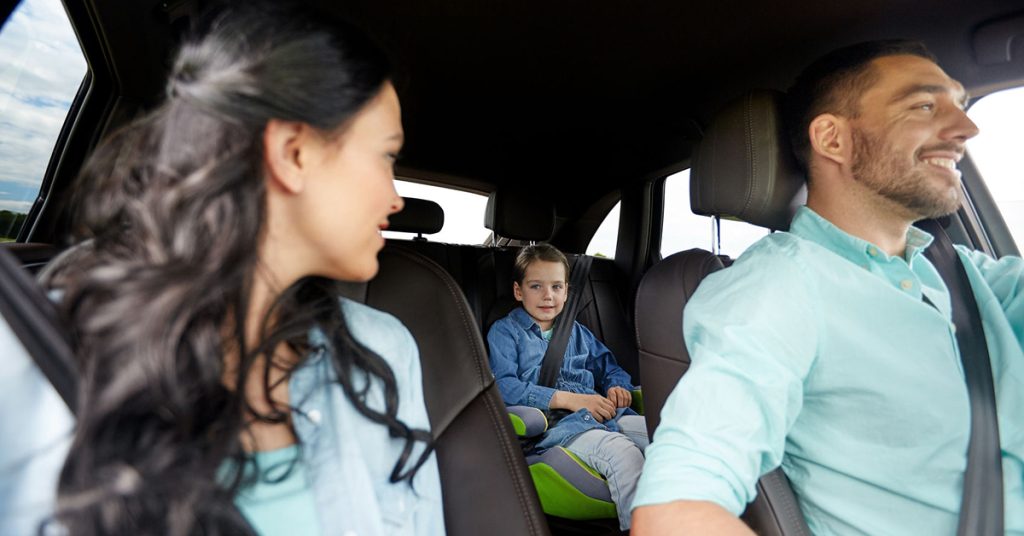Posts Tagged ‘child passenger safety seat all’
For Massachusetts Parents, Resources from Child Passenger Safety Week
 While there is so much going on right now, we want to put a spotlight on Child Passenger Safety Week. The safety week began Sunday, Sept. 20th and continues through Saturday, Sept. 26th.
While there is so much going on right now, we want to put a spotlight on Child Passenger Safety Week. The safety week began Sunday, Sept. 20th and continues through Saturday, Sept. 26th.
Motor vehicle accidents are the leading cause of death among children in our country, according to the CDC. Parents, of course, want to protect their children and follow Massachusetts car seat and safety belt laws. But this can be a challenge as children outgrow car seats, especially during COVID-19, when most shopping has to be done online.
We hope parents and grandparents find the resources on this page helpful. Remember, you want to find a car seat that fits your child and your vehicle. You also want to feel comfortable using it each day. A second-hand car seat may work for you. But for many people, we encourage to you start with a new car seat if you can.
In Massachusetts, children must ride in federally-approved passenger safety seats. They must ride in a car seat from birth until they reach age 8 or stand more than 57 inches tall. Children must be properly fastened and secured according to the manufacturer’s instructions. But where should you start? This is where parents often grow frustrated, as there are different car seats based on a child’s age and size. We will get you started: Children should start with rear-facing car seats until they reach the top height or weight limit set by the car seat maker. They will then move to a forward-facing car seat, then finally a booster seat.
Here are some resources:
- Child Passenger Safety Week. Read safety resources from the National Highway Traffic Safety Administration.
- Find the Right Car Seat. Check out this NHTSA chart on finding the right car seat.
- Massachusetts Car Seat Resources. Most years, the state of Massachusetts and local communities offer free car seat inspections and fittings for parents. This is an invaluable opportunity for parents. Due to COVID-19, you can expect fewer – if any – in-person car seat inspection opportunities. We suggest you start by visiting the state web page. Here is another helpful resource: Massachusetts Car Seat FAQs.
- Watch a How-To Video. While it may not be the same as an in-person inspection, the NHTSA offers helpful videos to help parents secure children at different stages.
- Keeping Asking for Help. If you are still unsure about your car seat, it is alright to keep asking for help. Try asking a family member or friend. You can also try your pediatrician’s office or visit your local police department’s website to see if they are offering car seat inspections at this time.
- Check Your Car Seat for Recalls. Check www.cpsc.gov to see if your car seat has been recalled. If you find a recall, call the manufacturer immediately and ask for the recall action. Often, a company will send a replacement part. But they may issue you a refund and ask you to return a defective car seat to a local store. Always follow a manufacturer’s instructions on disposing a recalled product.
- Register Your Car Seat. It’s easy to become distracted when you buy a car seat or a major item. Did you forgot to register yours? Take a minute to visit the manufacturer’s website now. Better late than never on this one. If there is a recall, this is the best way to get timely notification.
- Buckle Children Up Last. Pack everything up for the day in your car – work bags, backpacks, sports gear and lunch boxes – then buckle your child into their car seat last. This way you can always keep them in sight and talk to them as you get ready.
About Breakstone, White & Gluck – Boston Car Accident Lawyers
With more than 100 years combined experience, Breakstone, White & Gluck represents those have been injured by negligence and wrongdoing in Massachusetts. We specialize in the handling of personal injury, medical malpractice and car accident cases, including the representation of cyclists and pedestrians who have been injured. To learn more about our work, read our Car Accident Case Results page.
For a free legal consultation, contact our lawyers at 800-379-1244 or 617-723-7676 or use our contact form.
Massachusetts Parents: Reminders About Child Passenger Safety Seats

When properly used, child passenger safety seats can reduce the risk of fatal accidents by 71 percent for infants and by 54 for toddlers, according to the NHTSA.
Buying a car seat takes careful research. But most parents agree: the real hardship comes after you try to buckle your child up safely. While car seats are essential, they are anything but easy to use. And if you use them incorrectly, your child is left without proper protection.
All 50 states have laws requiring car seats for children. In Massachusetts, parents must secure their children in a federally-approved seat until they reach age 8 or over 57 inches tall. This is critical because car accidents are a leading cause of death for children ages 1 to 13, according to the National Highway Traffic Safety Administration (NHTSA). For every 32 seconds in 2017, a child under 13 was involved in a passenger vehicle crash.
We are writing about car seats because the NHTSA and other organizations recently observed Child Passenger Safety Week nationwide from Sept. 15 to Sept. 21. If you missed it, we are sharing a few resources and tips. If you are a parent, don’t lose hope. There are a lot of resources out there. The best place to start is with your local police department. Many police departments offer free car seat inspections year-round by appointment.
Selecting a Safe Car Seat
The NHTSA offers a free online resource to help parents select the right car seat. Parents should follow the manufacturer’s recommendations on age, weight and height recommendations for selecting car seats. NHTSA Find & Compare Car Seats
Types of Car Seats
Rear-facing seats. The NHTSA encourages children to use rear-facing seats up until age 3 or they reach the top of the manufacturer’s height and weight requirements. Always check your product manual for this information.
For the first 8 or 9 months, children should ride in rear-facing infant seats. The NHTSA then advises a move to a convertible or all-in-one seat, and that parents keep children rear-facing as long as they can.
As we said, it’s important to read your product manual and the manufacturer’s instructions. In past years, the recommendation was to keep your child in a rear-facing car seat until age 2. But new research has led to a new recommendation. In 2018, the American Academy of Pediatrics announced children can remain in rear-facing seats until they reach 40 pounds or more. While every child is different, this often comes after a child’s second birthday.
Forward-facing seats. Next, children will move into a harness and tether seat. This type of seat limits their forward movement if the car crashes. There are three types of forward-facing seats: convertible, combination and all-in-one.
Booster seats. These give children a boost so they can sit taller and safely use seat belts.
Without booster seats, seat belts can seriously injure children, causing abdominal bruising and injuries. Compared to seat belt use alone, booster seats are shown to reduce the risk for injury by 45 percent in children ages 4 to 8, according to the Centers for Disease Control and Prevention (CDC).
As with the other car seats, there are several types of booster seats: booster seats with high backs, backless booster seats, combination seats and all-in-on-seats.
In 2008, Gov. Deval Patrick signed the Massachusetts Child Passenger Safety Law, adding the booster seat requirement until children reach age 8 or 57 inches tall. At that point, children can move to regular seat belts in the back seat.
Making this transition earlier can leave your child without proper protection and vulnerable to injury. Unfortunately, parents are making this mistake. About 26 percent of children were moved to seat belts too early, according to the NHTSA.
Car Seat Registration and Expiration
Make sure to register your car seat with the manufacturer so the company can contact you if there is a recall. Car seats are frequently recalled and these can be widespread recalls, including mislabeling or defective parts. In 2014, Graco recalled 3.7 million car seats due to defective buckles, disrupting families across the country.
Remember, car seats have expiration dates. Look for the sticker at the bottom. The expiration date should be about six years from the manufacture date.
Never use a car seat beyond the expiration date. While the seat may appear to be in good condition, the plastic and other parts wear from daily use and exposure to sun, making the product less effective in protecting your child.
About Breakstone, White & Gluck – Boston Personal Injury Attorneys
Breakstone, White & Gluck has over 100 years combined experience representing those who have been injured and killed by the negligence and wrongdoing of others, including by car accidents. In 2013, we launched our Project KidSafe campaign to offer education and safety resources for children and families in Massachusetts. Learn more about Our Attorneys and our Project KidSafe campaign.
If you have been injured by someone else’s negligence, learn your legal rights from one of our attorneys. For a free legal consultation, call 800-379-1244 or 617-723-7676. You can also use our contact form.
Preventing Injuries: Check Your Seat Belts and Child Passenger Safety Seats
 There is nothing more important than protecting your family and other passengers in the car. Many of us drive less often in the winter in Massachusetts. But in a few weeks, families will be back in the car more for afterschool sports, activities and weekend trips.
There is nothing more important than protecting your family and other passengers in the car. Many of us drive less often in the winter in Massachusetts. But in a few weeks, families will be back in the car more for afterschool sports, activities and weekend trips.
Take a few minutes now to inspect your vehicle’s seat belts and child passenger safety seats. Make sure this equipment is working and properly adjusted to fit each child. Replace car seats if your children have outgrown them. Then talk to your family about the importance of always wearing a seat belt.
Dangers on the Road for Children
- Roughly 3 children in the U.S. die each day as a result of motor vehicle accidents, according to the National Highway Traffic Safety Administration (NHTSA).
- Car accidents increased 5.6 percent nationwide from 2015 and 2016. Child deaths in motor vehicle accidents increased 8 percent.
- Children were occupants in 74 percent of fatal car accidents in 2016. They were pedestrians in 20 percent of cases and were on bikes in about 5 percent of cases.
Seat Belt: Buckle Up, Every Ride
Your car should have working seat belts. Do a visual inspection and also sit in each seat while buckling up. If your seat belts are not working, call your auto dealer to have them repaired. Then, wear your seat belt on every trip, no matter how short. Insist your children and other passengers do as well. Drivers carry a lot of influence when it comes to seat belt use, especially parents.
Properly buckle your children in, especially when they are just transitioning from booster seats to seat belts. As they get older, they will start to buckle themselves in, but continue to check their seat belt before you start driving, even if just from the front seat. You want to make sure the straps are not tangled or jamming. Buckle up unused seat belts to discourage children from playing with them. Always lock your power windows so children cannot operate them from the backseat and finally, never leave your children alone in motor vehicles to play with seat belts unsupervised in your vehicle.
Watch this video to see how to buckle your child in:
Teenagers may need the most reminders, whether they are passengers or drivers. In 2016, 47 percent of young drivers who died in crashes were not wearing seat belts, according to the NHTSA. As a parent, you have to teach your teenager to be both a safe driver and a safe passenger and always, always wear seat belts. The decisions your children make while driving with friends are critical.
Massachusetts Law on Seat Belts
In Massachusetts, children must start wearing seat belts at age 8 or when they outgrow their child passenger safety seat.
The Massachusetts seat belt law requires drivers and passengers to wear seat belts while traveling in the front and back of vehicles. According to the Governors Highway Safety Association (GHSA), Massachusetts is one of 15 states which have a secondary enforcement seat belt law. While seat belts must be worn, drivers can only be cited for a seat belt violation after they are stopped for an unrelated traffic offenses. In primary enforcement states, drivers can be pulled over solely for not wearing a seat belt.
Seat belt use was 89.7 percent in 2017, according to the NHTSA. This increased about 5 percent from 2009, which is good news. Except that seat belt use was the lowest in the Northeast. Some 86.5 percent of drivers and passengers buckled up, compared to 94.5 percent out West. The best thing you can do is go for a 100 percent seat belt rate in your car.
Child Safety Seats: The Challenge
Car accidents are the leading cause of death for children and teenagers, according to the Centers for Disease Control and Prevention (CDC). Safe Kids Worldwide reports child passenger safety seats can reduce the risk of death by 71 percent. The problem is car seats can be hard to install, expensive and are frequently recalled.
Massachusetts has a Child Passenger Safety Seat law to protect young passengers:
- Children who are younger than 8 years old (or under 57 inches tall) must use an age-appropriate federally-approved child safety seat.
- Child safety seats should be placed in the back seat (if your vehicle doesn’t have a back seat, you can’t install the car seat in the front seat).
- Older children must wear a seat belt. It is recommended that children sit in the back seat until they reach age 13.
Parents must use an age appropriate car seat. Infants typically use a rear-facing car seat until age 2, then grow into a forward facing car seat and then a booster seat. Check these guidelines for help purchasing a child passenger safety seat.
Help Finding the Right Child Passenger Safety Seat
Common Mistakes in Fitting Car Seats
- Rear-facing infant/convertible seats are often installed with the wrong amount of incline while forward-facing car seats can be fit too loosely.
- A forward-facing seat should not be able to move more than an inch laterally. In one study, the NHTSA found more than 17 percent of forward-facing car seats were able to move more than 2 inches.
- A common mistake with booster seats is the lap belt position. Lap belts should sit on the child’s hips and thighs, not the abdomen or rib cage.
Source: NHTSA, National Child Restraint Use Special Study, June 2015
Where You Can Find Help
If you are having trouble with your car seat installation, ask if your local police department offers free car seat inspections. You can also check this website to find other resources in the area.
Child Car Seat Safety Information from Manufacturers
Register your child safety seats with the manufacturer so you will be notified if there is a recall. Even when you carefully research a product, these recalls can and do happen. Graco has recalled millions of child car seats, most for unsafe buckles, but also other defects. Other manufacturers have issued recalls when seats have failed to mount and when pieces posed a potential choking hazard.
Finally, read the manufacturer’s instructions for set up and check the expiration date. Many people do not realize that car seats have an expiration date.
About Breakstone, White & Gluck
For more than 30 years, the lawyers of Breakstone, White & Gluck have represented individuals and families who have been injured by negligent and reckless drivers in Massachusetts. Our Boston car accident lawyers are committed to fighting for justice for every client and have been consistently recognized for our results by Super Lawyers, U.S. News – Best Law Firms and Martindale Hubbell.
For a free legal consultation, contact us at 800-379-1244 or 617-723-7676 or use our contact form.
Safety Checklist: Check Your Baby Strollers and Other Children’s Products Before Spring
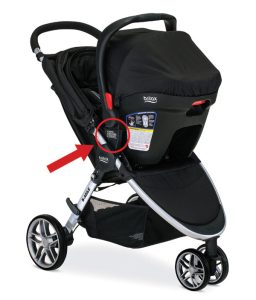 As Spring approaches, parents will be reaching for outdoor toys and children’s equipment. Baby strollers are one of the first products to come out.
As Spring approaches, parents will be reaching for outdoor toys and children’s equipment. Baby strollers are one of the first products to come out.
Before you use a stroller, check for loose or worn parts. Then find out if the stroller has been subject to a product recall or caused injury. You can check online now on the Consumer Product Safety Commission website.
Baby Stroller Recalls. We started with baby strollers because there have been several baby strollers recalled in the past year, including Britax, Aria Child and Phil & Teds strollers. Britax has actually issued two sets of recalls over the past 15 months, one for 60,000 strollers in January 2016 and another for more than 700,000 strollers in February 2017.
In December 2016, Aria Child recalled 29,000 strollers, instructing consumers to stop using the products and contact the company for a free replacement. Five consumers were pinched by the hinge mechanism of the $180 stroller. Four of these consumers needed stitches for cuts. In addition, 71 strollers malfunctioned, by folding unexpectedly during use. Twelve adults and children suffered bumps or bruises. One adult fell and fractured a wrist and elbow.
In February, Britax Child Safety Inc. recalled more than 700,000 strollers, including the Britax B-Agile and BOB Motion strollers. The strollers had defective mounts which attached to the car seat carrier. Britax received 44 reports of car seats detaching and 26 injuries including scratches, bruises and bumps to the head. More than 1,300 receiver mounts on strollers were damaged. Britax has instructed parents not to use the strollers with the travel system and to contact the company for a repair kit.
Check for Other Recalls. As consumers, we are not always aware of recalls, especially if products are passed down or are not registered with the manufacturer. Make it an annual routine to check on product recalls each Spring before your child starts using them.
Checklist of Toys and Children’s Products to Check for Safety Before Spring
Dressers. Ikea recalled 29 million dressers in June 2016, following the deaths of six children. The Consumer Product Safety Commission recommends parents always secure dressers to a wall.
Lane Furniture. The Lane Furniture recall of cedar chests is a painful topic for many people in Massachusetts. We only include it here as an example of a product which has been recalled, yet continues to harm consumers.
In 2014, two children from Franklin, Mass. tragically suffocated while playing and becoming trapped in a Lane Furniture cedar chest which had been recalled because the latch was unsafe. This was not the first time a child was killed. According to the Consumer Product Safety Commission, 34 children have become trapped and died in similar chests since 1996. Lane Furniture had first recalled 12 million of the cedar chests in 1996. But many chests are likely still in use with the dangerous latch in place, in homes, in storage and consignment shops. They are so dangerous because they are nondescript and would not stand out to many consumers.
Car Seats. Car seats or child passenger safety seats are a source of frustration for many parents. If you are struggling with yours, check online to see if it has been recalled. Millions of parents were impacted by the Graco car seat recalls in recent years. The buckles in these car seats were defective, forcing parents to cut the straps to free children in some cases.
Outdoor Toys to Check. This time of year, make sure to also check for recalls related to swingsets, bicycles, pools and other outdoor toys. Even if these products are not recalled, carefully inspect them. They age; repair any broken pieces. Throw away products which are broken and could cause injury. Remember, if a product can harm your child, it can cause someone else injury. Take it apart before you throw it away.
Conclusion
In a perfect world, you would not have to inspect your children’s products periodically or check for product recalls. Manufacturers have a responsibility to properly design and test products and should take those steps. When they do not, they can be found liable for injuries resulting from defects. They may also be subject to government investigation and fines.
About Breakstone, White & Gluck
The Boston product liability attorneys at Breakstone, White & Gluck have over 100 years combined experience representing those injured by defective products and medical devices. In recent years, we have obtained settlements of $1.15 million and $2.5 million for individuals injured by defective products or products which were misused.
If you have been injured, learn your rights. For a free legal consultation, contact us at 800-379-1244 or 617-723-7676 or use our contact form.
Check Your Child’s Passenger Safety Seat
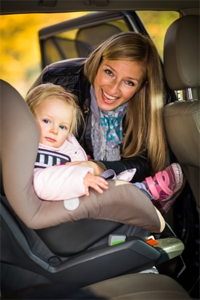 Motor vehicle accidents are a leading cause of injury and death for children. A properly installed child safety seat reduces the risk of injury by approximately 80 percent and of death by 28 percent, compared to children in seat belts alone.
Motor vehicle accidents are a leading cause of injury and death for children. A properly installed child safety seat reduces the risk of injury by approximately 80 percent and of death by 28 percent, compared to children in seat belts alone.
Child safety seats are required in Massachusetts and every other state. They are one of the first steps a parent takes to protect a child when they leave the hospital and get in the car. But they are hard to use and many parents struggle even as children get older.
Nearly 3 out of 4 children are not properly fastened in their car seats, according to a recent National Highway Traffic Safety Administration (NHTSA) survey. If a child safety seat is not properly installed, it cannot fully protect a child in a car accident.
Child Passenger Safety Week
Child Passenger Safety Seat Week, sponsored by the NHTSA, began last weekend and runs through next Saturday, Sept. 19th, which is also National Seat Check Saturday. We encourage parents to have your child safety seat checked. Check your local newspaper or social media for car seat check events near you. Here are other resources:
Websites for Parents to Visit
Massachusetts Child Passenger Safety Events
Child Passenger Safety Seat Inspection Sites
Child Passenger Safety Week is also a good reminder to check if your child safety seat has been recalled and for parents to prepare for changes in routine. If someone else picks your child up at school or daycare, you must have a child safety seat available.
Massachusetts’ Child Passenger Safety Seat Law
In Massachusetts, children must be secured in child safety seats for the first few years, then booster seats until they are eight years old or over 57 inches tall. Children should always be seated in the back seat of the car, as it is the safest place for them in case of an accident.
Infants. All infants and toddlers should ride in a rear-facing car seat until they are 2 years old or reach the weight and height limit set by the car seat manufacturer.
Toddlers/Preschoolers. At this age, children should use a forward-facing car seat with a harness until they reach the height and weight limits set by the car seat manufacturer.
School-aged Children. The next step is a booster seat. Children must sit in a booster seat in the back-seat until he or she is 8 years old or over 57 inches tall.
Seatbelts. Children can then move into a seat belt in the backseat if they are big enough. They should use both lap and shoulder seat belts.
To learn more, visit this guide on child safety seats in Massachusetts.
About Breakstone, White & Gluck
The Boston personal injury attorneys of Breakstone, White & Gluck have over 100 years combined experience representing clients who have been seriously injured in motor vehicle accidents, truck accidents and motorcycle accidents. If you have been injured, it is important to learn your rights. For a free legal consultation, contact us at 800-379-1244 or 617-723-7676 or use our contact form.
National Child Passenger Safety Week: Check for Child Seat Recalls This Year
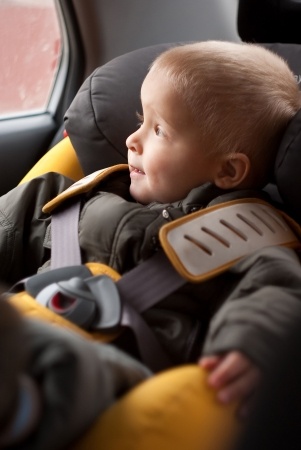 This is National Child Passenger Safety Week, when parents can get answers to common questions about driving safely with their children.
This is National Child Passenger Safety Week, when parents can get answers to common questions about driving safely with their children.
National Child Passenger Safety Week began last weekend and is observed by the National Highway Traffic Safety Administration (NHTSA) and local communities. It ends this weekend with National Seat Check Saturday.
Motor vehicle accidents are one of the leading causes of death for children in the United States. Child safety seats reduce the risk for injury if they are used properly, by more than 70 percent when it comes to infants and more than 50 percent for children age 1 to 4. But parents have long struggled with how to use them. In one study, more than 70 percent of 3,500 observed car and booster seats were misused in a way that could harm children, according to the Centers for Disease Control and Prevention (CDC).
Parents should also closely examine their child safety seat models this year. Several months ago, Graco recalled more than 6 million child safety seats, the largest car seat recall in U.S. history. Parents reported they were unable to unbuckle defective harnesses and had to cut their children out of the straps. The cause was food was getting dried up in the harnesses and causing them to stick.
Child passenger safety laws have changed over the past decade and every state now has a law for infants and children-fitting specific criteria. All but two (Florida and South Dakota) require booster seats for older children. The Massachusetts Child Passenger Safety Law requires children to ride in federally-approved child passenger safety seats that are properly secured until they are eight years old or over 57 inches tall.
Despite laws for older children, Safe Kids, a national non-profit organization, has released a new report, showing 7 in 10 parents did not know a child should be at least 57 inches or 4’9″ tall before they ride in a car without a booster seat. The organization surveyed 1,000 adults.
A few resources on child safety seats:
Check Your Car Seat Label. Become informed about the specifics of car seats. Make sure yours fits your child’s weight, size and age. For infants through age two, look for a rear-facing child safety seat. For children between ages 2 -4 or up to 40 pounds, choose a forward facing child safety seat. From age 4 to 8 or 57 inches, children should ride in belt positioning booster seats. Read more.
Car Safety Seat Checklist for Parents. Safe Kids has developed this checklist for parents.
Register Your Car Seat. Here is a resource from the NHTSA on registering your car seats with the manufacturer. This will allow the manufacturer to contact you if there is a defect.
Used Car Seat Safety Checklist. Here is a resource from the NHTSA on using used child safety seats.
Community Events. Some organizations offer free car seat safety inspections this weekend as part of National Seat Check Saturday and allow parents to make appointments with trained professionals throughout the year. Here is a directory of locations or you can contact your local police department to ask about resources in your community.
Read More
More than 33,000 Child Car Seats Recalled
 Combi USA announced a recall of over 33,000 car seats last week and said parents should expect repair kits starting in February.
Combi USA announced a recall of over 33,000 car seats last week and said parents should expect repair kits starting in February.
Combi USA recalled its Coccorro, Zeus, Turn and Zeus 360 models made through January 2013. The National Highway Traffic Safety Administration (NHTSA) reports the seat straps do not meet minimum requirements. Children may not be properly secured in case of a car accident.
The Charlotte, N.C. company said one part of the harness failed strength tests, but the harness as a whole meets safety standards. Seats made after January 2013 do not have this defect.
Combi USA will notify owners who have registered their products and mail out free harness replacement kits starting in February.
What to Know About Child Safety Seats
Choosing a safe car seat and learning how to properly install it is a struggle for many parents. There are a number of resources to help make the process easier.
Product Recalls.The Consumer Product Safety Commission (CPSC) website provides updates on product recalls. This recall was reported in the media and not listed on the website, but most recalls can be found there.
NHTSA. The National Highway Traffic Safety Administration provides online resources about child seat safety ratings.
State of Massachusetts. In Massachusetts, children must use some type of child passenger safety seat until they are 8 years old or weigh 57 pounds. All seats must meet federal standards. Read what types are appropriate for each age.
Local Police Departments and Organizations. Your local police may have an officer who has been specially trained to fit car seats. This is a free service.
Related:
Combi USA Recalls More than 33,000 Child Seats, ABC News.
Read More
Child Passenger Safety Week September 15-21

Many parents follow the law and fasten their children into child passenger safety seats. But the National Highway Traffic Safety Administration (NHTSA) says three out of four are doing it incorrectly, leaving children vulnerable to serious injuries.
There is a lot of confusion about child passenger safety seats. They are challenging for parents to position and laws change every few years. Additionally, each state has its own law. But they are important. Child safety seats reduce the risk of death for infants by 71 percent, according to the Centers for Disease Control and Prevention (CDC). The figure is 54 percent for toddlers ages 1 to 4.
September is a good time for parents to have their child’s passenger safety seat inspected for free. The NHTSA and communities across the country will hold Child Passenger Safety Week is Sept. 15 – 21. Sept. 21 is National Seat Check Saturday. You can search this database or this website to find a child seat inspection station near you (we suggest you call in advance to check).
There are inspection stations in Boston, Cambridge, Somerville and many other Massachusetts communities. These technicians should be certified and trained in the NHTSA curriculum. Some stations, such as local police departments, are often available to help parents throughout the year if you call for an appointment.
Massachusetts Child Passenger Safety Law
The Massachusetts Child Passenger Safety Law requires all children to use child passenger restraints until they are 8 years old or over 57 inches tall (4′ 9″). Up until 2008, the law only required children under 5 years of age and 40 lbs to ride in a safety seat.
There are four types of car seats: infant carrier seats, rear-facing convertible seats, forward-facing seats and booster seats, for children ages 4 until they are 8 years old in Massachusetts. When children turn 8 and are 57 inches tall, they can move into a seatbelt. The state recommends children travel in the backseat wearing a seatbelt until they are age 13.
Use of a booster seat reduces the risk of fatal injury for children ages 4 – 8 by 55 to 67 percent compared to unrestrained children and adults, according to a recent article in the University of Michigan Transportation Research Institute.
Another Change in Law May Be Coming
Another change may be coming for child passenger safety seats, but if so, the requirement will not be effective until February 2014.
The NHTSA has proposed that a child car seat be secured by a seat belt and top tether rather than the Latch system, according to the Wall Street Journal. In 2002, the Latch system became a federal requirement and new cars had to have anchor points between cushions so child safety seats could be secured.
The reason for the change is car seats were lighter a decade ago. Children were not required to use them for as many years as they are under today’s laws. The changes would include new labeling for car seats identifying the weight limits. The Juvenile Products Manufacturers Association represents child seat makers and is asking for the new requirement to be suspended and instead for the weight limits to be increased for the back seat anchors.
Related:
Child Passenger Safety Week: a Reminder Car Seats are Critical to Protecting Children
If you have children, your car probably has at least one car seat buckled in at all times. But when was the last time you checked its positioning or if your child is using the right model?
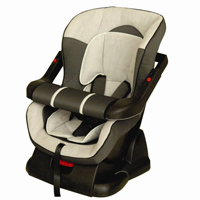
A good answer is right now. The National Highway Traffic Safety Administration (NHTSA) is observing Child Passenger Safety Week from Sept. 16 – 22. Sept. 22 is National Seat Check Saturday. Parents can click here and find a full list of sites throughout Massachusetts offering free car seat checks by certified and trained professionals.
The right car seat and positioning is critical because motor vehicle crashes are one of the leading causes of death among children ages 3 to 14. A car accident can come suddenly without warning and a child passenger safety seat is essential to keeping young passengers safe.
Child passenger seats are generally divided into four categories: infant carrier seats, rear-facing seats, forward-facing seats and booster seats.
All 50 states and the District of Columbia require child safety seats and all but two – Florida and South Dakota – require booster seats or similar devices for children who have outgrown safety seats.
The Massachusetts Child Passenger Safety Law requires all children riding in passenger motor vehicles be in a federally-approved child passenger restraint which is properly fastened and secured until they are 8 years old or over 57 inches tall. The number of children increased substantially with the passage of the Booster Seat Bill in 2008.
About Child Passenger Seats
Infant carrier seat. These are for children up to 1 year of age who weigh 20 pounds. The height limit is up to 26 pounds.
Rear-facing convertible seat. These are for children who are 6 months to 1+ year of age, who weigh under 30 pounds.
Forward-facing seat. These are for children over 1 year of age who weigh more than 20 pounds and under 40 pounds.
Booster seat. These are for children age 4 to 8. When students turn 8 and stand taller than 4 feet 9 inches, they can transition to a back seat belt. It is recommended children travel in the backseat wearing a seatbelt up until the age of 13.
Related:
- Enhanced Child Passenger Safety Law, Commonwealth of Massachusetts.
- State Child Passenger Safety Laws, Governors Highway Safety Association.
Child Passenger Safety Week Highlights Need to Protect Children
 To parents, there is nothing more important than their children’s safety. In the car, safety starts with child passenger safety seats.
To parents, there is nothing more important than their children’s safety. In the car, safety starts with child passenger safety seats.
This week, the National Highway Traffic Safety Administration is observing Child Passenger Safety Week. This weekend is National Seat Check Saturday, an opportunity for parents to have their child’s safety seat inspected free of charge.
Motor vehicle accidents are the leading cause of death among children in the United States, according to the Centers for Disease Control and Prevention (CDC). Child passenger safety seats have been shown to reduce these deaths. For infants, child safety seats result in a 71 percent reduction in motor vehicle accident deaths.
All 50 states have child passenger protection laws. Violations are a primary offense in Massachusetts and 47 other states, meaning police can stop drivers solely for non-compliance. In Colorado and Nevada, child passenger safety violations are a secondary offense.
In Massachusetts, children must travel in a federally approved child passenger safety seat restraint until they are 8 years old or over 4’9″ tall.
Parents often use child safety seats incorrectly. In one study observing nearly 3,500 child safety seats, 72 percent were misused, according to the CDC. This increases the chance for motor vehicle accident injuries and deaths.
Massachusetts parents can ensure their child safety seat is properly fastened on Saturday, when police departments and not-for-profit organizations will provide free checks.
If you are a parent of a young child, click here to find an inspection station near you.
Click here for information on the Enhanced Child Passenger Safety Law in Massachusetts.
Read More


